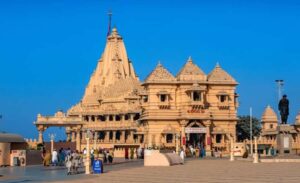Best Time to Visit Kasauli
Nestled in the beautiful state of Himachal Pradesh in northern India, Kasauli is a charming hill station that offers a respite from the hustle and bustle of city life. The town’s picturesque landscapes, pleasant climate, and serene ambiance make it a popular destination for tourists seeking a peaceful retreat. To plan your visit to Kasauli effectively, it’s essential to understand the town’s different seasons, weather conditions, and temperature variations. In this comprehensive guide, we will explore the best time to visit Kasauli throughout the year.

Seasons in Kasauli
Kasauli experiences four distinct seasons throughout the year, each with its unique charm and characteristics. Let’s delve into each season to help you decide the best time to plan your visit.
1. Spring (March to May)
Spring is one of the most pleasant seasons in Kasauli. It begins in March and continues through May. During this time, the town experiences a gradual rise in temperature, and the natural surroundings come to life with vibrant flowers and blossoms. Spring in Kasauli is characterized by:
- Temperature: Daytime temperatures range from 15°C to 25°C, making it comfortably cool.
- Weather: The weather is generally clear and sunny, with occasional light showers.
- Activities: Spring is an excellent time for nature walks, birdwatching, and exploring the town’s gardens and parks.
- Tourist Inflow: The number of tourists starts to increase during spring, but it’s not as crowded as the peak season.
2. Summer (June to August)
Summer in Kasauli stretches from June to August. This is the peak tourist season, as the region experiences pleasant weather, and many people from the plains seek refuge from the scorching heat. Summer in Kasauli is characterized by:
- Temperature: Daytime temperatures range from 20°C to 30°C, making it ideal for outdoor activities.
- Weather: While it’s mostly sunny, occasional rain showers are common, so carrying an umbrella or raincoat is advisable.
- Activities: Summer is the best time for trekking, hiking, and exploring the lush green forests. Don’t forget to visit Monkey Point, a popular tourist spot.
- Tourist Inflow: Summer witnesses a significant influx of tourists, so it’s advisable to book your accommodation in advance.
3. Monsoon (September to November)
Monsoon in Kasauli begins in September and continues through November. The town experiences lush greenery during this season, and the rainfall rejuvenates the entire region. Monsoon in Kasauli is characterized by:
- Temperature: Daytime temperatures range from 20°C to 25°C, providing relief from the summer heat.
- Weather: Frequent rain showers are common, and the region is prone to landslides, so it’s essential to check weather conditions before planning your visit.
- Activities: While outdoor activities can be challenging due to rain, this season is excellent for enjoying the town’s serene ambiance and scenic beauty.
- Tourist Inflow: Monsoon is considered the off-season, so you can expect fewer tourists, making it a great time for a peaceful getaway.
4. Winter (December to February)
Winter in Kasauli starts in December and lasts until February. This season transforms the town into a winter wonderland with the possibility of snowfall. Winter in Kasauli is characterized by:
- Temperature: Daytime temperatures range from 5°C to 15°C, and nights can be quite cold, with temperatures dropping to around freezing point.
- Weather: Clear skies and occasional snowfall make this season charming but chilly. Make sure to pack warm clothing.
- Activities: Winter is perfect for enjoying the snow, sipping hot beverages, and taking leisurely walks. Gilbert Trail and Mall Road are great places to explore.
- Tourist Inflow: While not as crowded as summer, winter still sees its fair share of tourists, especially during the holiday season.
Best Time to Visit Kasauli
The best time to visit Kasauli depends on your preferences and the type of experience you seek. Here’s a summary of the ideal times to plan your trip:
- March to May (Spring): If you prefer pleasant weather, blooming flowers, and fewer crowds, spring is the best time to visit Kasauli. It’s an excellent time for nature enthusiasts and those looking for a peaceful escape.
- June to August (Summer): Summer is the peak tourist season in Kasauli, attracting visitors with its pleasant weather and lush green landscapes. It’s ideal for outdoor activities and exploration but can get crowded.
- September to November (Monsoon): Monsoon is the off-season, making it an excellent choice for budget travelers and those who enjoy the rainy, serene atmosphere. Just be prepared for occasional rain.
- December to February (Winter): If you dream of experiencing snowfall and a cozy winter atmosphere, then winter is the perfect time for your visit. It’s an excellent choice for a romantic getaway.
General Tips for Visiting Kasauli
To make the most of your trip to Kasauli, consider the following tips:
- Accommodation: Book your accommodation well in advance, especially during the peak season, to secure the best options.
- Pack Accordingly: Depending on the season of your visit, pack suitable clothing and essentials. For winters, don’t forget your warm clothes and accessories.
- Check Weather Updates: Keep an eye on the weather forecast, especially if you plan to visit during the monsoon season, to ensure a safe and pleasant trip.
- Local Cuisine: Don’t miss the opportunity to savor Himachali cuisine at local eateries. Try dishes like Chana Madra and Babru.
- Respect the Environment: Be a responsible traveler and avoid littering or damaging the natural beauty of the region.
- Explore Local Culture: Take the time to interact with the locals and learn about their traditions and culture. Kasauli has a rich heritage worth exploring.
In conclusion, Kasauli is a year-round destination, but the best time to visit depends on your preferences and what you want to experience. Whether you choose the vibrant spring, the lively summer, the serene monsoon, or the snowy winter, Kasauli offers a tranquil escape from the chaos of city life and a chance to connect with nature in the lap of the Himalayas.
Also Read:





